K-Musical International Conference
– Understanding the Strategies for Globalizing Korean Musicals
Heekyung Ko_Dean of Graduate School of Performing Arts, Hongik University
The K-Musical Market took place for three days from November 24 to 26 at the Opera House and the Conference Hall of the Seoul Arts Center. The event consisted of various programs designed to promote the exchange of information and to introduce Korean original musicals. This included a conference, a roundtable, stage readings, and a pitching session. I was the moderator of the international conference slated for the first day, Knocking on Musical Markets: New Markets, Investments, Collaboration. Producers from Korea, the United Kingdom, and the United States attended the event and led discussions on three topics: developing K-investment models based on the market and investment status of the Korean musical theater industry; the current status of musical production, investment, and distribution on Broadway and in the West End; and global strategies for new musical markets.
The Korean panel was represented by Chunsoo Shin, Executive Program Director of the K-Musical Market and President of OD Company, and Sungwook Yoon, CEO of Funderful, the developer of a new investment platform based on crowdfunding in the cultural sector. Four musical theater producers from overseas were also present: producers Jane Bergère and Cody Lassen (from the United States), general manager James Seabright, and chief creative officer Brian Hook (from the United Kingdom).
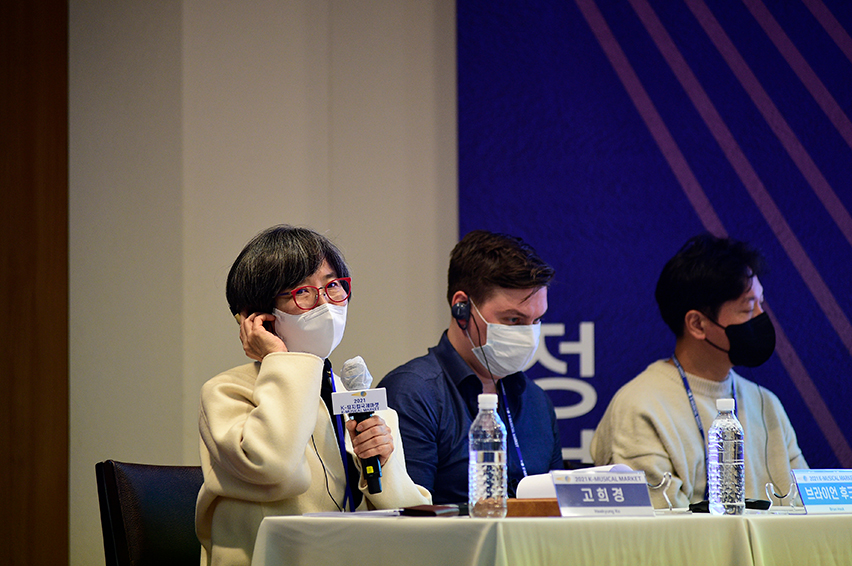 Heekyung Ko(left), the conference moderator of K-Musical Market (ⓒKAMS)
Heekyung Ko(left), the conference moderator of K-Musical Market (ⓒKAMS)
K-investment Model for Musical Market Stability
The first part of the conference, titled “Developing the K-investment Model Based on Market and Investment Status of the Musical Theater Industry in Korea” was presented by Chunsoo Shin and Sungwook Yoon. As the executive program director of the K-Musical Market and CEO of OD Company, Shin proposed investment models for Korean musicals. He started his presentation with concerns that “although musicals lead the performing arts sector with the highest annual revenues, they have been showing stunted growth over the past few years due to the limits of the domestic market.”
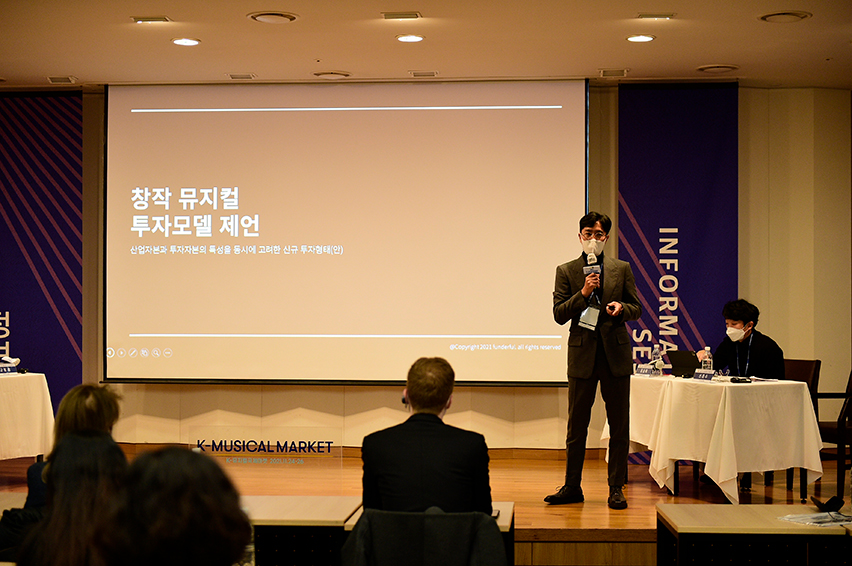 Chunsoo Shin, the presenter of ‘Developing the K-investment Model Based
Chunsoo Shin, the presenter of ‘Developing the K-investment Model Based
on Market and Investment Status of the Musical Theater Industry in Korea’ (ⓒKAMS)
With foreign licensed musicals dominating the Korean musical market, investors are turning to licensed musicals that guarantee ticket sales. However, in order to expand the industrial base for generating long-term revenues from IP, it is necessary to invest consistently in Korean musicals from the initial stages of development and raise the quality of the shows. Unfortunately, investments are lacking in this field. The value of the K-Musical Market jumped from KRW 94.5 billion in 2010 to KRW 210 billion in 2019 before the start of the COVID-19 pandemic. Although it is promising that original productions account for more than 30 percent of the total market, the investment environment is a different story. The four investment models presented by the speakers have been designed for the current situation which is characterized by low barriers to entry, an unstable investment environment, a growing market, and a rising interest in musicals.
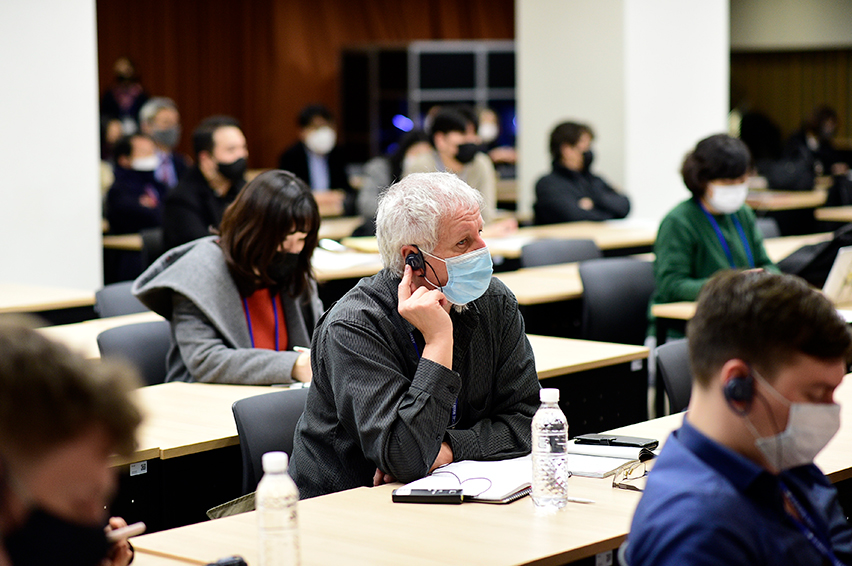 conference attendees (ⓒKAMS)
conference attendees (ⓒKAMS)
First, there is the widely used project investment model in which a theater production invests in an original performance that possesses IP and divides the profits according to a predetermined agreement based on the project budget. The second is a long-term investment in which investors participate in a production from the development stages and share the losses and profits with the production company. In this case, the production company considers the initial development costs, production costs, and the running costs of an open run and invests in the project with a long-term view, but shares the royalties, additional copyrights, and other forms of profits and risks. The third combines these two models in what’s known as a lineup investment model. In this case, a production company creates a lineup of hit musicals and works-in-progress to generate funds, while investors calculate the pluses and minuses of the company’s entire lineup to arrive at the final sum. For this model to work, there must be effective and independent investments by a separate management company that functions like a specialized investment company whose shareholder is a musical production association that serves the public interest. Finally, the last is a public project investment model. Consisting of small investments made online, this model appeals to the MZ generation and is currently in use in various fields. Since the musical market has a strong fan base, this model can benefit from production stability built upon small investments and marketing effects.
The presentation on K-musical investment models aimed to find a stable production environment for original musicals. There was a debate led by Shin, who advised producers to exercise caution when approaching new works that have higher barriers of entry than hit musicals, and Yoon added that musical producers who are only familiar with offline investments must be ready to meet online audiences for the public project investment model to work.
Understanding English-language Musical Production Trends and Markets
In the second part of the conference, four producers gave presentations on the current status of musical production, investment, and distribution on Broadway and in the West End. Since theaters are only beginning to reopen after almost an 18-month hiatus due to COVID-19, the overseas producers started their presentations by explaining the current situation overseas and their interests in Korea’s performing arts sector.
Jane Bergère began by looking at the situation on Broadway before and after COVID-19. While hit musicals such as Lion King, Phantom of the Opera, Moulin Rouge!, and Hamilton have continued to do well despite the pandemic, shows that deal with darker themes like Chicken and Biscuit and Dana H. are struggling since the audience no longer wants to listen to lectures at theaters. The audience prefers cheerful stories, which is why expectations are high for comical and spectacular family-friendly shows such as Beetlejuice and Mrs. Doubtfire among the new musicals. This is a trend that can be observed in Korea as well.
Given that those who create and invest in musicals must love their shows, Bergère emphasized that mutual communication is important in licensing and legal procedures and that the key is to find strategic partners anywhere in the English-speaking world. In the United States, it is also important to work with individual investors since there are as many private investors acting as investment companies. Furthermore, the objective of the show must determine the approach. Commercial shows can only succeed if the audience falls in love with the story and the main characters, whereas small-scale, non-profit musicals must be able to provide food for thought. Bergère emphasized that timing is equally important for both types.
James Seabright, an Olivier Award-winning theatrical producer, introduced the current musical trends and production situation in the United Kingdom and the United States. He chose the changing zeitgeist of the times as a major trend today and referred to three commercially successful productions that reflect the current spirit of the age—Heathers: The Musical, related to the Me Too movement; Six, a retelling of history from women’s perspectives; and Everybody’s Talking About Jamie, an honest search for one’s true identity. Seabright also introduced co-productions involving public theaters, a strategy for distributing risks and safely securing theaters, along with examples of musicals that premiered on streaming services around the world due to the pandemic. He presented various case studies including Six, a student production that went on to attract investments from across various markets; Mrs. Doubtfire, an example of a musical co-produced by British and American producers; and the Broadway hit The Book of Mormon that succeeded in the West End.
British producer Brian Hook, CCO of Hartshorn–Hook Productions that created The Great Gatsby, is focusing on immersive performances and new musical styles. He emphasized the importance of localization, explaining how he paid close attention to Korean sensibilities for the Korean production of The Great Gatsby. The same applied to all European productions as well. He also explained the importance of understanding each country’s tax system and legal procedures.
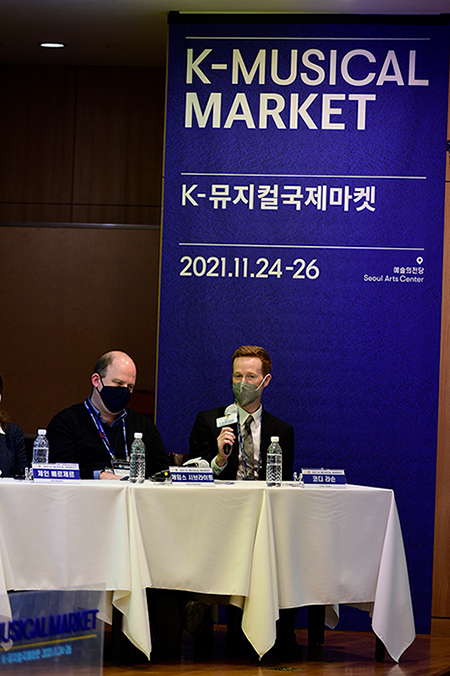
James Seabright(left) & Cody Lassen(right), the presenter
(ⓒKAMS)
Cody Lassen, the producer of Spring Awakening, pointed out that the traditional way of producing musicals is changing. Six premiered at the Edinburgh Fringe Festival and went on to do a UK tour before going to the West End and Broadway, while Hadestown went through an album release, off-Broadway, Canada, and the United Kingdom before premiering on Broadway. These examples show that musicals are being created through a variety of routes. Consequently, new investment models must be able to accommodate tours and other markets, and include studio cast and live recordings. He believes that Broadway must pay attention to new media and that the five largest musicals should target the global market from the initial production stages.
Mutual Understanding for the Future
The conference ended with a Q&A session with the audience and discussions led by the overseas speakers, CJ ENM Head of Performance Division Juyeol Ye, and CultureHolic President Youngsub Jin. Having invested in and licensed Broadway musicals, Ye shared his experiences of limited partnerships (LPs) and long-term partnerships (GPs), stating that Kinky Boots began as a form of LP, but will expand to a long-term partnership in the future. Jin discussed the Chinese market and emphasized the importance of understanding the local culture and cultural differences when localizing Korean musicals. The overseas producers, agreeing that musicals are now an industry with a global market, reemphasized the importance of understanding the zeitgeist of the times and localizing licensed musicals based on mutual communication.
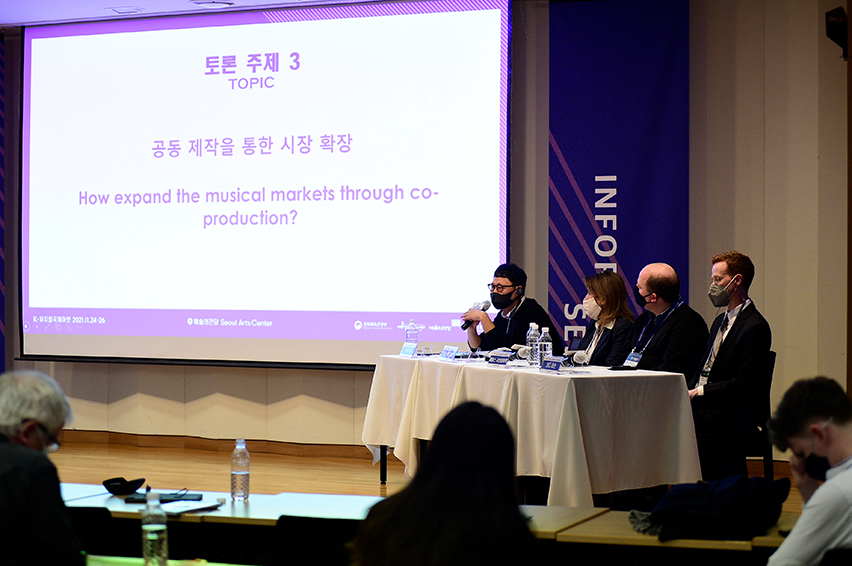 Juyeol Ye(left), the penel of ‘global strategies for new musical markets’ (ⓒKAMS)
Juyeol Ye(left), the penel of ‘global strategies for new musical markets’ (ⓒKAMS)
When the audience asked questions regarding the debut of Korean musicals on Broadway and finding new audiences, the overseas speakers emphasized the importance of strong content and that productions should not be scared to keep knocking on Broadway’s door. They added that the K-Musical Market provided a meaningful opportunity to engage in talks, which could eventually help productions go overseas and prepare to meet new audiences. Paying attention to the young audiences and producing family-oriented works are the basis of pioneering a new market. By sharing the interests and production know-how of overseas producers, the international conference at the K-Musical Market offered realistic and fundamental solutions for Korean original musicals hoping to debut abroad. Although there are no shortcuts to attracting investments and becoming a ticket box hit, one principle holds true in both local and global markets: success depends on good content that reflects an understanding of the new zeitgeist.
Heekyung Ko is the dean of Hongik University’s Graduate School of Performing Arts, the head of Hongik Daehakro Art Center, and the artistic director of Yeulmaru in Yeosu. Her career as a theatrical producer started in 1987 when she entered the Seoul Arts Center. She worked there for 23 years before taking on a four-year post as the first director of D-cube Art Center in 2009. She co-authored Ride the Humanities Specs (Sapyoung Book, 2010) and translated Musical Workbook (Theatre & Man Press, 2018). She published “A Case Study on the Programming of Public Theaters in Korea” (Korea Theater Studies Association, 2012) and co-authored “A Study on the Marketing Strategies of National Theaters” (Korea Cultural Policy Institute, 1996) and “A Study on Performance Arts Marketing” (Korea Arts Management Service, 2007).
hkko@hongik.ac.kr








 PREV
PREV
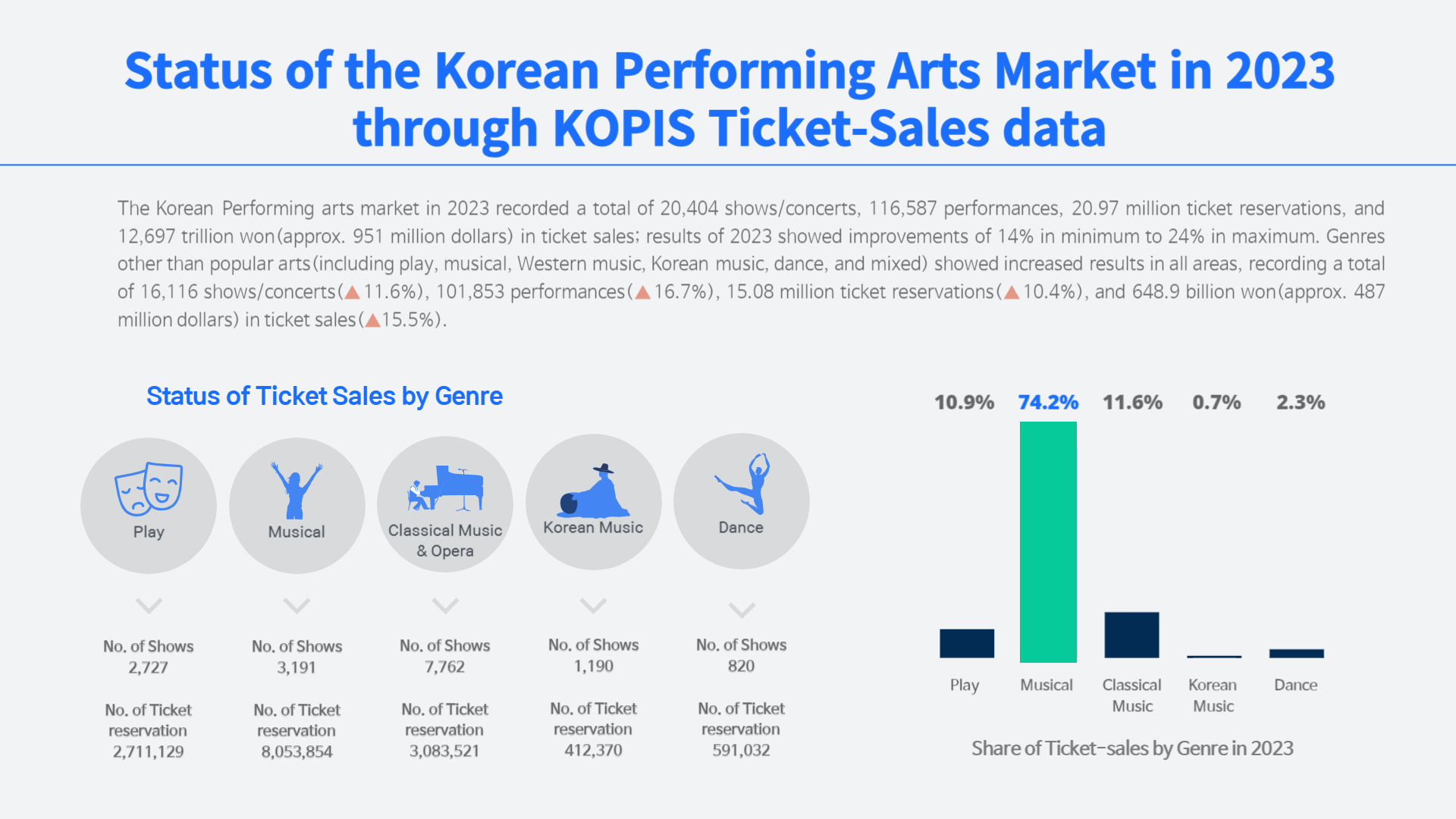
.jpg)
.jpg)
.jpg)
.jpg)











